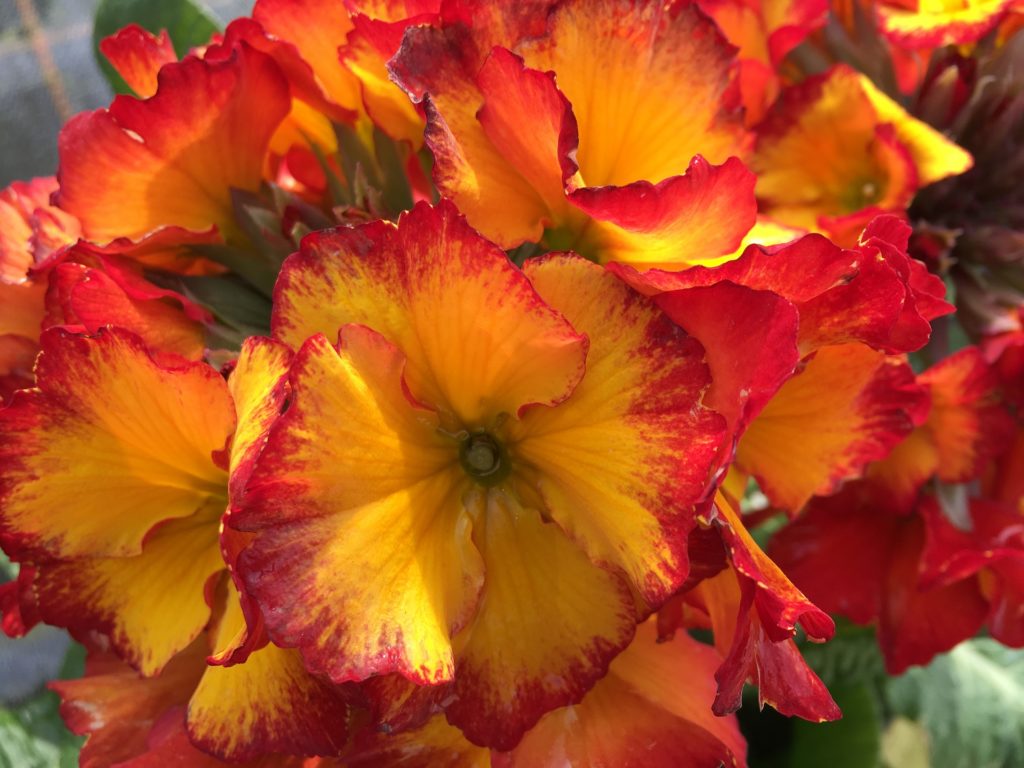Bright, cheerful polyanthus are our go-to garden pick-me-ups in the depths of winter, yet so many of these little colour spots fail to live up to our expectations – and all because we don’t know how to care for them. Once off the garden centre shelves and into our pots or gardens, polyanthus inevitably fail to thrive, refuse to repeat bloom or turn to mush in the bud. What’s worse, these pretty plants that should flower right through until mid-spring, frequently give up the ghost altogether. But trust us – it doesn’t have to be this way. Follow the tips below to enjoy your favourite winter flowers for weeks to come.

Choose wisely
Traditionally, polyanthus blooms were born on long stems raised well above foliage height. However, with a demand for concentrated colour, modern-day, hybrid polyanthus have been bred to bear dense masses of compact flowers which develop at the same height as the plant’s leaves. The result is a drastic reduction in air flow around the plant. This, in turn, encourages fungus of the sort that sees the flowers rot in the bud. When selecting polyanthus at the garden centre, you have two choices: either purchase the more traditional varieties (such as Gold Lace – and if you do this you will find you don’t have quite the colour range to choose from) or follow our ‘polyanthus grooming’ advice below).
Must-have mix
Polyanthus may be winter flowering but that doesn’t mean they enjoy wet feet. When planting polyanthus in pots or tubs, choose a potting mix with free-draining properties (this is one that has had sharp sand added to it (compost alone is too heavy). If you’re economising by choosing a budget potting mix, add your own sharp sand to it at a rate of 1:4 (sharp sand is cheap to buy or you can produce your own by sifting out and using the fine grit found in builder’s mix). Pots and tubs should be raised off the ground on pot feet or bricks to allow water to drain easily. If planting polyanthus into a poor-draining garden, add sharp sand to the soil and raise the plants up slightly on low mounds.
Weather watch
Even cool-season plants can take only so much bad weather. If conditions become very wet or cold for prolonged periods, provide your plants with a sheltering cloche. A novel way to do this is to saw off the curved section of an old see-through plastic umbrella, then press the handle into the potting mix so the umbrella covers the plants. Alternatively, where possible, move your potted polyanthus under the eves of your house or up against a sheltering wall.
Polyanthus grooming
Polyanthus may be popular but that doesn’t mean they are easy-care – not if you want value for money – so get out the manicure scissors! Make it a weekly routine to snip off damaged or dead flowers. It’s so important that you do this by reaching right down into the flower head to remove the spent flowers at the very base of their stalk. If you don’t, the remaining piece of stem will rot and likely infect developing buds. While you’re at it, snip off damaged, dead or yellowing leaves. In fact, if the plant is showing signs of fungus, don’t hesitate to reduce the foliage by snipping off a few healthy leaves lying on or close to the soil.
Feed me!
Think of your polyanthus as you would a growing teenager – come the end of the day they require a lot of feeding! Polyanthus usually have enough slow release fertilizer in their potting mix to see them through the first 5-6 weeks of growth. But after this, their nutrients are likely to be running out, and if you want to encourage repeat flowering from the plants, you will need to give them food. At this later stage, liquid feeding is best because it means you are not disturbing the soil to add the nutrients, and in liquid form, they will be more quickly taken up. Liquid feed with plenty of phosphorus can be purchased from gardening centres. Alternatively, you can prepare a liquid feed yourself by soaking half a bucket of chopped seaweed with two handfuls of aged animal manure in one bucket of fresh water. Leave for a week, strain off, and water onto your polyanthus plants once a week.










Join the Discussion
Type out your comment here:
You must be logged in to post a comment.